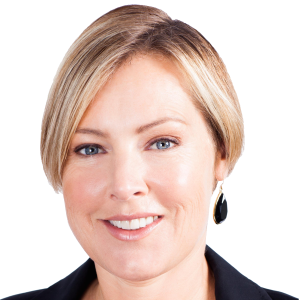Older women on US television send subliminal message


Roula Khalaf, Editor of the FT, selects her favourite stories in this weekly newsletter.
Andrea Mitchell has been a luminary of lunchtime television in America for a decade, hosting a popular MNSBC news show. No wonder: she is smart, with expertise in foreign and domestic policy, and has an attractive, warm demeanour.
She is also, at 72 years old, well past the age that many Europeans — and, to a lesser extent, Americans — would have retired.
She is not alone. Lesley Stahl is a star of US television journalism at 77. Judy Woodruff is anchor of PBS NewsHour at 72; Oprah Winfrey is a media entrepreneur at 65; Gayle King, breakfast show host, is 64, while Christiane Amanpour, another host, is 61. Maria Bartiromo and Mika Brzezinski are a more youthful 51.
Yes, in recent months there has been a buzz about Alexandria Ocasio-Cortez, the 29-year old Congresswoman from New York who is shaking up leftwing politics. But it is actually Nancy Pelosi, House speaker, who dominates Democratic policymaking — and the television screens — at 78. Her fellow Democrat, Dianne Feinstein, wields huge influence at 85. Amy Klobuchar, Kamala Harris and Kirsten Gillibrand are campaigning to become the next Democratic presidential candidates, at the ages of 58, 54 and 52, respectively.
Beyond politics, Janet Yellen, former Federal Reserve chair, is a prominent face on television screens at 72.
On one level, this should not be surprising. Women make up half the population and have a life expectancy of 81, compared with 76 for men, and America’s elite circles — not just television screens — are brimming with men in their sixties, seventies and eighties, including the president, who is 72.
But on another level, the presence of these older female faces in the US public sphere is both striking and thrilling — at least it is for a 51-year-old woman, like me, who grew up in England. In my childhood, I saw only two middle-aged female faces regularly on television who commanded influence and power: Margaret Thatcher, the late prime minister, and Queen Elizabeth II. The other women on TV — or in the public eye generally — were mostly youthful newscasters or actresses.
To some extent, that remains the case in British media. Yes, there are now plenty of middle-aged women in the public sphere: in politics, just think of prime minister Theresa May, or Amber Rudd, a senior minister. But while older women have become stars with lifestyle shows, such as the cook Mary Berry, it is older men who host news shows. Emily Maitlis, host of BBC’s Newsnight, is an exception — but at just 48, she is a mere kid compared with Ms Mitchell or Ms King.
Why? A cynic might argue that the longevity of women on US television partly reflects improvements in plastic surgery and other cosmetic enhancements. Older women in the public eye in America tend to look fabulously youthful. Almost none has grey hair, one exception in Washington being Frenchwoman Christine Lagarde, head of the International Monetary Fund, who sports stylish grey hair and wrinkles.
Another aspect that might explain the transatlantic difference is that while the UK elite considers it normal to retire in their early sixties, this is not the case among its US counterparts. On the contrary, in keeping with America’s spirit of reinvention, it is now normal in Washington and New York for middle-aged people to relaunch themselves repeatedly in different career realms.
Appearing on television at 72, in other words, reflects a wider zeitgeist.
A third factor perpetuates this: demonstration effect. TV executives used to blame the lack of older women on their screens on audience taste: they would, it was said, be less popular than younger female presenters and not command the same credibility as men. There was probably some truth to that: precisely because older women were so invisible, audiences found it jarring to see them on screen.
But American television has shown that what seems odd in one generation can quickly become normal in another: these days the older women are not just accepted by audiences, but are very popular, too. That creates a self-reinforcing dynamic: every time a girl switches on a television, she can see visual inspiration on the screen and a message that it is entirely normal for a woman to have a voice — at any age. The subliminal message this sends, in terms of raising female ambition, is huge.
This in itself will not change the world, let alone rectify all the other gender problems. And, yes, there is still much further to go: true equality on screen would entail having plenty of women who are not obliged to look glamorous at any age — some channels still feature a preponderance of youthful blondes. But the fact that Ms Mitchell, Ms King or Ms Bartiromo are still appearing on American screens represents progress. We should cheer it — whatever our age.
The writer is US managing editor
Comments